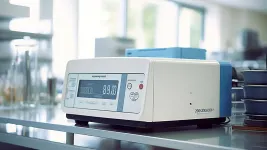How to Get Periods Immediately: A Complete Guide [August, 2024]
Getting your period can be inconvenient, messy, and downright unpleasant. Yet there may come a time when you wish it would just arrive already—perhaps you’re trying to get pregnant or want to avoid surprises before a big event. The good news is there are several natural, safe ways to encourage your period to start sooner. While no method can make it arrive immediately, you can help move things along.
This comprehensive guide covers lifestyle changes, foods, herbs, supplements, exercises, and more to help induce menstruation quickly and effectively. Read on to learn how to get periods fast using natural home remedies.
Summary Overview – How to Get Periods Immediately
| Category | Techniques | Expected Timeline |
|---|---|---|
| Lifestyle Changes | Manage stress through meditation, yoga, support groups, etc. Improve diet by limiting sugar, caffeine, alcohol. Get daily moderate exercise & 7-9 hours sleep nightly. | Helps regulate cycles within 1-2 months |
| Foods & Herbs | Ginger, papaya, parsley, turmeric, black cohosh, dong quai. | May encourage menstruation onset within 7-10 days |
| Supplements | Vitamin B6 & E, magnesium, omega-3s. | Assist with cycle regulation over 1-2 months |
| Physical Activities | Pelvic massage, yoga poses increasing blood flow, kegels, bouncing exercises, sex. | Could stimulate menstruation within 7-14 days |
| Medical Options | Hormonal blood tests, imaging, biopsies to diagnose issues. Medications or surgery to treat underlying condition. | Safest approach for long-absent periods, restores cycles variable timeline. |
Understanding Your Menstrual Cycle
Before exploring how to make your period come faster, it’s helpful to understand what’s happening in your body during your menstrual cycle. Here’s a quick overview of the key phases:
- Follicular Phase: Spanning day 1 of your period through ovulation. During this time an egg matures and estrogen levels rise.
- Ovulation: The release of a mature egg, generally occurring about 14 days before your next expected period.
- Luteal Phase: Ovulation through the first day of your period. Progesterone levels peak to thicken the uterine lining, preparing for potential implantation.
- Menstruation: The shedding of the uterine lining marks the start of your period, resetting the cycle.
The timing of each phase varies per woman, but stress, diet, exercise, weight changes, medications, and health conditions can all impact cycle regularity. When cycles become irregular, inducing menstruation may help reset your body’s internal clock.
Lifestyle Changes to Regulate Your Cycle
Before turning to more aggressive induction methods, simple lifestyle adjustments could set your cycle straight. Here are some easy switches that encourage period regulation:
Manage Stress
High stress disrupts reproductive hormone balance, often delaying ovulation which then pushes back your period. Finding healthy stress outlets is key:
- Meditation and yoga quiet mental chatter, lowering stress hormone production.
- Light exercise boosts feel-good endorphins to combat anxiety and depression.
- Support groups allow you to share worries and find camaraderie.
- Massage helps muscles unwind, promoting relaxation.
- Nature time reduces cortisol levels for better hormone regulation.
Improve Your Diet
Eating a balanced diet keeps insulin levels steady for proper estrogen and progesterone balance. Focus on lean proteins, fiber-rich complex carbs, and healthy fats while limiting sugar, alcohol, salt, and caffeine.
Stay Active
Moderate exercise that raises your heart rate for 30 minutes daily keeps cycles regular. Take brisk walks, jog, dance, cycle, or swim. Avoid excessive high-intensity workouts and under fueling.
Get More Sleep
Aim for 7-9 hours per night so your pituitary gland can secrete reproductive hormones appropriately. Develop an evening routine that promotes relaxation 30 minutes before bedtime.
Foods and Herbs to Induce Menstruation
Alongside lifestyle measures, certain foods contain compounds that encourage menstrual flow. Additionally herbs have emmenagogic effects, stimulating blood flow to the uterus.
Ginger
Ginger’s warming properties increase circulation to the uterus, potentially triggering menses onset. Take 1,000-1,500 mg daily in capsule form or brew fresh ginger tea.
Papaya
Papaya contains carotene, which boosts estrogen levels, while the enzymes promote uterine contractions. Eat 1 small papaya daily or drink 2 cups of fresh papaya juice.
Pineapple
Pineapple has the enzyme bromelain, which some believe impacts estrogen levels. While unproven, eating fresh pineapple or taking 500-700mg bromelain supplements daily may help.
Turmeric
Curcumin, turmeric’s active compound, affects estrogen levels while reducing inflammation causing menstrual irregularities. Take 500-800 mg curcumin supplements per day.
Parsley
The phytoestrogens apiole and myristicin in parsley potentially stimulate uterine activity. Drink 2-3 cups of strong parsley leaf tea daily. Avoid large amounts if pregnant, nursing, or have kidney issues.
Black Cohosh
One of the most popular emmenagogic herbs, black cohosh has compounds that mimic estrogen’s effects. Take 40-80 mg twice daily. Avoid if pregnant, nursing, or have liver disease.
Dong Quai
Used in Chinese medicine to regulate cycles, dong quai increases circulation to reproductive organs. Take 500-1000 mg capsules once or twice daily or brew tea from roots or leaves.
Vitamins, Minerals, and Supplements
Specific micronutrients impact menstrual regularity—deficiencies can cause delays while proper intake encourages a timely cycle.
Vitamin B6
Studies link low vitamin B6 levels with long and irregular cycles. Boost B6 intake through sunflower seeds, pistachios, tuna, poultry, potatoes, and bananas or take a 50-100 mg supplement daily.
Vitamin E
Vitamin E helps regulate ovulation and menses. Up intake via wheat germ oil, nuts, seeds, spinach, broccoli, kiwi, tomatoes, mangos, carrots, red bell peppers, and supplements around 400 IU daily.
Magnesium
Magnesium deficiency alters estrogen levels and disrupts ovulation. Correct insufficiency by eating pumpkin seeds, spinach, swiss chard, soybeans, cashews, black beans, edamame, brown rice, quinoa, nuts, or take 350-500 mg supplement form per day.
Omega-3s
Essential fatty acids dampen inflammation causing menstrual irregularities and promote ovulation. Eat more salmon, mackerel, walnuts, chia seeds, flax seeds, or take 1,000 mg fish oil capsules daily.
Physical Activities to Encourage Menstruation
For centuries midwives used massage techniques to stimulate pelvic blood flow, initiate labor, and encourage stagnant periods. Today pelvic physiotherapy provides a modern take on this idea with skilled practitioners using internal and external massage, trigger point release, stretching, and bodywork tailored to your unique needs. Active exercises creating intra-abdominal pressure may further help coax out uterine linings.
Self-Massage
Apply gentle pressure with your fingers around hip creases, lower abdomen, groin muscles, inner thighs, and sacrum to increase blood flow. Or use a tennis ball against tight spots.
Yoga Poses
Inversions, folds, and hip openers encourage circulation to reproductive organs:
- Bridge (Setu Bandha Sarvangasana)
- Bound angle (Baddha Konasana)
- Legs up the wall (Viparita Karani)
- Child’s pose (Balasana)
Kegel Exercises
Squeezing then relaxing pelvic floor muscles tones the area for better function. Do 3 sets of 10 reps daily.
Bouncing
Bouncing on an exercise ball or jumping jacks jostle your insides, potentially dislodging built-up debris in the uterus. Go for 10 minutes daily.
Sex
Orgasm and semen introduce hormones that promote menstruation through uterine contraction and cervix dilation. So don’t skimp on pleasure!
When to Seek Medical Care
While the above techniques may successfully hasten menses onset, periods disappearing for over 3 months warrant medical assessment. See your doctor for:
- No period by age 16 (or 3 years after thelarche breast development)
- Over 3 months without a period
- Suddenly very heavy, painful periods
- Bleeding between cycles or after sex
Diagnostic tests check hormone levels, scan for uterine abnormalities, and assess ovulation patterns to determine the cause. Your practitioner can then tailor appropriate treatment to regulate your cycle.
Understanding Menstrual Cycle Irregularities
Menstrual cycles rarely fit a perfect 28-day timeline. Yet when your period disappears or becomes unpredictable, it signals something’s awry.
Common Causes
- PCOS: Ovarian cysts disrupt ovulation and hormone balance.
- Endometriosis: Uterine tissue grows outside the uterus, affecting menstruation.
- Thyroid dysfunction: Thyroid hormones interact with reproductive hormones.
- Premature ovarian failure: Ovaries stop releasing eggs before age 40.
- Medications: Anti-inflammatories, antidepressants, contraceptives and more influence cycles.
- Eating disorders: Low body weight reduces estrogen levels causing missed periods.
When to See Your Doctor
Seeking medical advice for missed periods lasting over 90 days helps determine the underlying cause early when treatment is most effective. Your doctor can check for:
- Nutrient deficiencies disrupting ovulation
- Polycystic ovarian syndrome (PCOS)
- Premature ovarian failure
- Uterine scarring or abnormalities
- Thyroid disorders
- High prolactin levels indicating pituitary gland issues
Risks of Herbs and Supplements for Inducing Periods
While home remedies sound harmless, herbs and supplements carry risks:
Interactions
Black cohosh, dong quai, parsley, turmeric, and others can interact with medications like birth control pills, blood thinners, sedatives, diabetes drugs, nonsteroidal anti-inflammatories, and chemotherapy agents.
Allergic Reactions
Some women react to supplements with rashes, itching, swelling, dizziness, trouble breathing, or anaphylaxis.
Safety Issues
Herbal purity and potency goes unchecked without FDA oversight. Some contain pesticides, heavy metals, toxins, or lack the listed ingredient. Others have too high doses.
Limitations
No evidence confirms dietary supplements or herbs reliably induce periods. Manufacturers hype benefits without research to back efficacy claims.
Checking with your pharmacist regarding any supplements ensures safety with your personal health status and medication regimen. Better yet, consult your healthcare provider before attempting to self-induce menstruation without a diagnosed cause.
When Inducing Your Period Fails
Despite your best natural induction efforts, if your period remains elusive beyond 90 days or you experience sudden heavy bleeding, it’s time for prompt medical assessment.
Here’s what happens at your doctor’s visit:
Diagnostic Testing
Bloodwork, pelvic ultrasounds, MRI scans and endometrial biopsies check for potential problems. Testing also monitors ovulation and hormone levels.
Targeted Treatment
Your treatment plan depends on exam and test results indicating the specific cause. Options range from medications to regulate cycles to surgical interventions for structural issues.
Working closely with your doctor brings the best outcome when facing absent or irregular periods. Relying solely on shaky home remedies without pinpointing the true underlying trigger means delays in proper treatment.
Conclusion
A late or absent period causes understandable frustration and worry. But rather than sit around hoping it shows up, take action through natural period induction techniques. Lifestyle measures, targeted foods, herbs, supplements, massage, physical activities, and when needed, medical treatment, help spur menstrual flow.
While no overnight fix exists, being proactive sets you up for success in bringing on a timely period and regulating your cycle long-term. Trust your body, give it some extra care, and be patient through the process. With a little luck your period will arrive right on time.
Learn more about Menstrual cycle and How to Induce a Period
FAQs about How to Get Periods Immediately
What is the fastest way to get your period?
The fastest, proven way to induce menstruation is taking a combination of the medications mifepristone and misoprostol under medical supervision. This treatment stimulates uterine contractions, softens the cervix, and prompts menstrual bleeding typically within 48 hours of administration.
What can I drink to induce my period immediately?
Unfortunately, there are no beverages that instantly prompt your period’s arrival. Yet staying well hydrated, limiting alcohol and caffeine, and drinking ginger, parsley, or papaya tea may encourage the onset of menstruation within several days.
What triggers a period to start?
In a healthy menstrual cycle, periods begin when estrogen and progesterone hormone levels drop, cutting off life support for the uterine lining. Without these hormones, the lining breaks down and sheds through your vaginal canal. Stress can delay this hormonal shift and stall menses.
Can I get my first period immediately?
No, you cannot immediately induce your very first menstruation, called menarche. The timing of your first period relates to pubertal development under control of your body’s natural hormone patterns. Nothing speeds this up. Most girls begin cycling between ages 10 and 15.
Is it possible to start my period in an hour?
Unfortunately, it remains impossible to suddenly start your period within only an hour, no matter how frustrating the delay feels. Even the most aggressive medical induction protocols take longer to work by instigating the complex hormonal and physical uterine changes necessary for menstruation. Be patient, care for your body, and allow its natural rhythms to unfold.

Product prices and availability are subject to change. Any price and availability information displayed on merchant's site at the time of purchase will apply to the purchase of these products. HappyCredit is a participant in the Amazon Services LLC Associates Program, an affiliate advertising program. As part of this program, we may earn commission from qualifying purchases made through the affiliate links provided on this website. We only promote products on Amazon that we genuinely believe are of high quality and value to our audience. The inclusion of affiliate links does not influence our editorial content or product recommendations. Our primary goal is to provide useful information and help you make informed purchasing decisions.
Certain portions of the text in this article might have been created using AI tools and subsequently edited by the author to improve the overall quality and clarity of the content for readers.
![How to Get Periods Immediately: A Complete Guide [August, 2024] How to Get Periods Immediately: A Complete Guide [August, 2024]](https://happycredit.in/cloudinary_opt/blog/how-to-get-periods-immediately-0agyt.webp)









